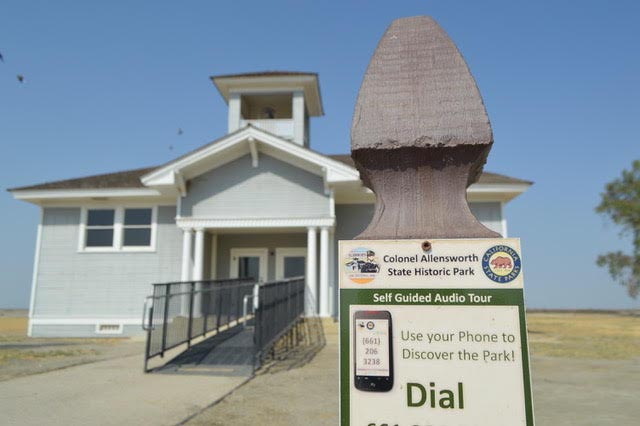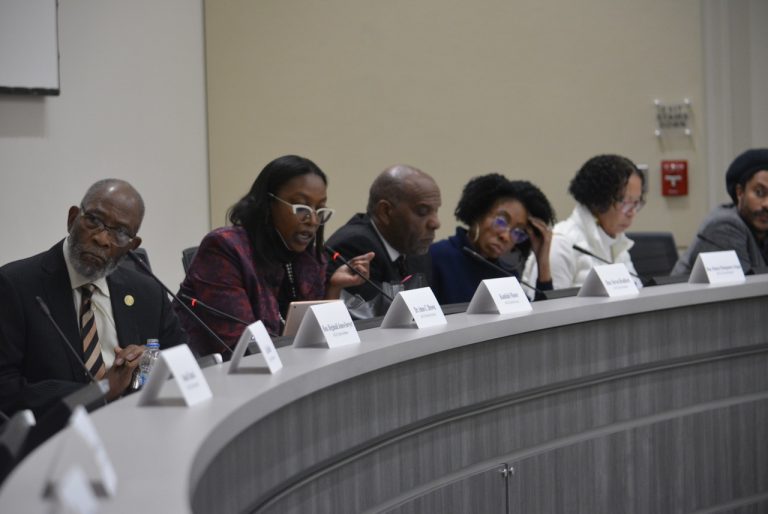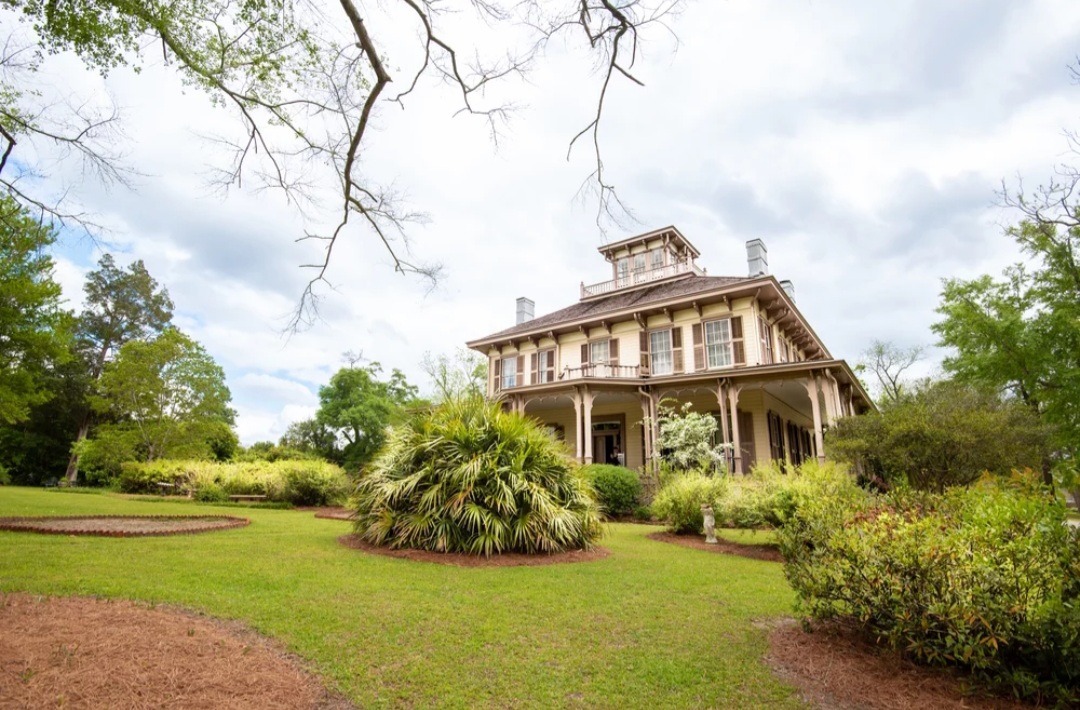
Antonio Ray Harvey | California Black Media
As the California reparations task force determines the impact of slavery on the lives of Black Californians, a Black-led business management group in the Central Valley is revitalizing an obscure national treasure: Lt. Col. Allen Allensworth State Historical Park.
The project pays tribute to Allensworth, California, a town founded by African Americans in 1908. The history of the settlement speaks to the perseverance of African Americans and the terror that they experienced.
Last week, at a ceremony held at the park, Global Economic Impact Group, LLC (GEIG) and the African American Network of Kern County (AANKC) announced the launch of their revitalization effort.
At the event, California State Parks and Recreation official Russ Dingman gave details about the groups’ plans to continue the late Lt. Col. Allen Allensworth’s vision, one of the town’s founders and its namesake.
“Col. Allensworth, with three other families, built this because of Jim Crow-ism,” said Randall Cooper, CEO of GEIG. “We want to be a part of the restoration.”
About 50 people attended the launch event held at Allensworth visitors’ center. Among guests were members of the Black American Political Association of California-Fresno (BAPAC), San Joaquin Valley Chapter of Black Women Organized for Political Action (BWOPA), Fresno Black Farmers, representatives from the U.S. Department of Agriculture, Friends of Allensworth, the African American Clergy Caucus of Fresno, Kern County Black Chamber of Commerce, Mothers’ Against Gang Violence, Kern County Black Chamber of Commerce, Buffalo Soldiers of Kern County, Allensworth Progressive Association, and others.
State officials present, virtually and in-person, included representatives from Gov. Gavin Newsom’s office; California U.S. Congressmen David Valadao (D-CA-21) and Jim Costa (D-CA-16); Tulare County Supervisor Pete Vander Poel III; Corcoran Mayor Patricia Nolen, among others.
“One of Col. Allensworth quotes was, ‘Create sentiment favorable to intellectual and industrial liberty,’” Stephen L. Sanders, Chief of Staff for Kern County School District said. “It’s all about teaching our kids that spirit is still alive.”
Remnants of the colony that had a population of about 300 Black residents during its heyday can be found at the park.
Allensworth was an educator and U.S. Army’s chaplain to four Black regiments. He was born into slavery in Kentucky. After leaving the Army, he moved to Los Angeles with his wife Josephine Leavell Allensworth.
The Birth of California’s Historic All-Black Town
In 1908, Allensworth and Pasadena-based educator William Payne formed two organizations: the California Colony and Home Promotion Association (HPA) to create a settlement where Black people could live free from discrimination and racism.
The organizations purchased 900 acres for the town. By 1909, Allensworth had become the first California town founded, financed, and governed by Black Americans.
The town had a church, post office, hotel, library, two schools and numerous businesses that offered the essentials and comforts of a thriving community.
Socially, Allensworth bustled with activity. There were sewing circles, holiday events, glee clubs, an orchestra, fishing, hunts for jackrabbits, and more.
The Demise of Allensworth
By 1914, “a difficult year for the town” the brochure states, Allensworth began suffering from droughts and the lack of irrigation for farmlands.
Some historians believe, by 1925, racist White authorities intimidated by Allensworth’s success were behind the Pacific Farming Company’s decision to cut off the town’s irrigation water supply. Fighting the action in court helped to deplete Allensworth finances.
The Santa Fe Railroad closed a major railway stop important to the town’s commerce, citing Allensworth’s low water level. That also factored into Allensworth’s economic decline.
Also, that year, the town’s inspirational leader Allensworth was struck by a motorcycle as he crossed the street in Monrovia, California. He died on Sept. 14, 1914, at the age of 72.
The residents of the Black town tried to carry on Allensworth’s vision but struggled when drought, poor crop harvests, and other hardships further deteriorated living conditions. Recruitment of the town’s men to fight in World War I also decimated Allensworth’s population.
Allensworth has been the target of demolition many times dating back to the 1960s, but the state of California bought the land in 1974 and turned it into a state park. About 70,000 guests visit every year.
Gail Crooms, who lives in Central Valley, says it is important to keep the Black heritage of the area alive.
“I wanted to be a part of this the first time I visited Allensworth in
1999,” said Crooms, who is GEIG’s Director of Business Development. “It had always been my dream to put a Historical Black College and University (HBCU) on this site.”
Cooper and Crooms are GEIG partners, along with former Fresno City councilmember Cynthia Sterling and William Broomfield. Sterling is GEIG’s director of public affairs and Broomfield serves as CFO and COO.
The Possibility of Reparations for Allensworth Descendants
California’s Assembly Bill (AB) 3121, signed into law in 2020, created a nine-member task force to investigate the history and costs of slavery in California and around the United States.
The commission is examining the extent of California’s involvement in slavery, segregation, and the denial of Black citizens their constitutional rights.
It is also studying incidents of state-backed racial crimes, like the illegal shutting down and state acquisition of the Black-owned Bruce’s Beach in Southern California and the seizure of Black-owned property in Folsom County involving the Burgess family.
GEIG hopes that Allensworth is a part of those discussions.
“Allensworth has not been part of the conversations of reparations,” Broomfield said. “But (GEIG) is now bringing it to the forefront so that family members of the original Allensworth community, who are still living, are able to get reparations.”
GEIG plans to restore landmarks and build a museum, an amphitheater, a water park, campground and other attractions.
“You don’t hear about Black history in California and the West Coast,” Broomfield said. “Because of what happened to Black Wall Street people are becoming aware of what happened to Black communities.”




